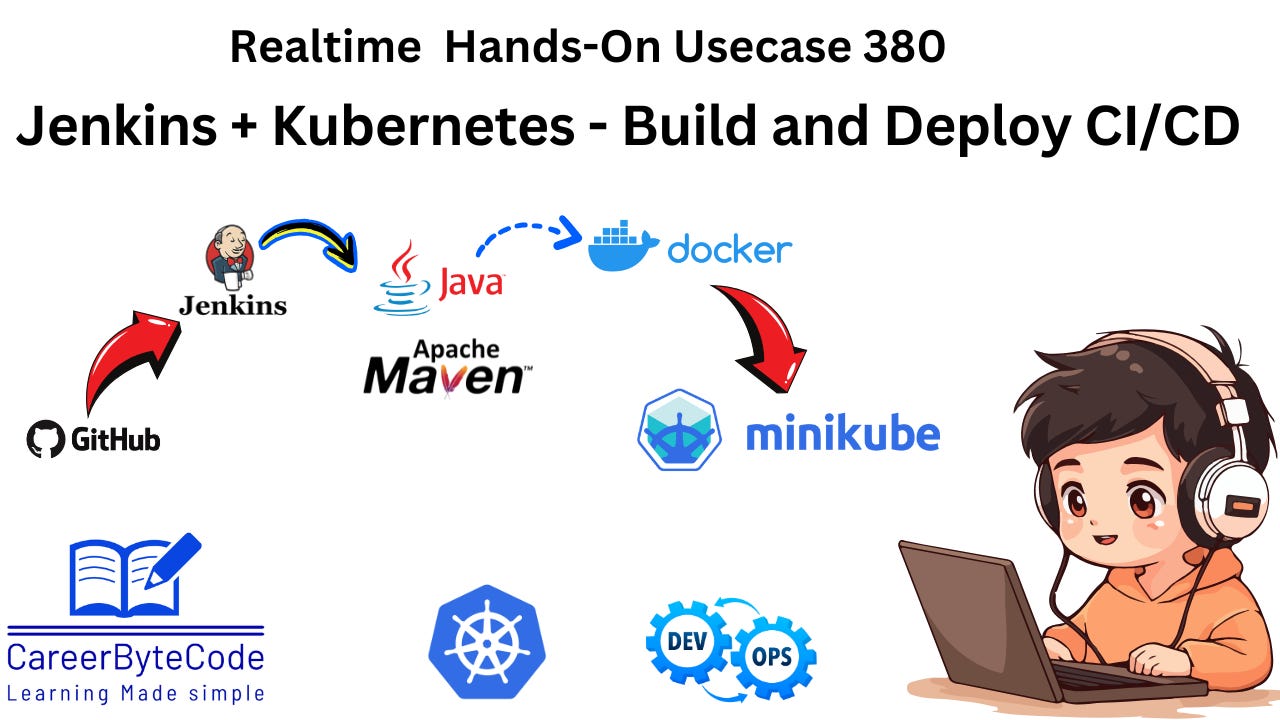End-to-End CI/CD Pipeline with Jenkins and Kubernetes on Windows Using WSL, Docker, and Minikube
In a typical enterprise software delivery lifecycle, achieving reliable, repeatable, and production-grade CI/CD workflows is essential.
1. Problem Statement:
In a typical enterprise software delivery lifecycle, achieving reliable, repeatable, and production-grade CI/CD workflows is essential. However, setting up and managing an end-to-end pipeline on Windows that includes building, testing, containerizing, pushing Docker images, and deploying to Kubernetes poses several challenges, especially for developers working in Windows-native environments.
Most DevOps tools like Jenkins, Docker, and Kubernetes are optimized for Linux, which leads to compatibility issues, configuration complexity, and environment mismatch when working on Windows machines. Manual setup also makes the pipeline fragile and hard to scale or replicate across teams.
2. Key Challenges:
Jenkins, Docker, and Minikube must be integrated on a Windows machine using WSL, which is non-trivial and often undocumented.
Developers often lack access to real Kubernetes clusters, making local Minikube-based testing a crucial alternative.
Docker builds and Kubernetes deployments from Jenkins need secure credential management, correct pipeline logic, and environmental compatibility.
Managing version control, CI pipeline stability, and deployment consistency across tools becomes overwhelming without automation.
Organizations need an affordable, portable CI/CD lab setup for learning, experimentation, and PoC deployments.
3. Objective:
To design and implement a complete CI/CD pipeline using:
Jenkins (CI server running inside WSL)
Docker (for containerization)
Minikube (for local Kubernetes simulation)
GitHub (for source code management)
This pipeline should:
Clone code from GitHub.
Build the application using Maven.
Package it into a Docker image and push it to Docker Hub.
Deploy the containerized app into a local Minikube Kubernetes cluster.
Ensure the entire process runs seamlessly on a Windows machine with WSL.
The goal is to provide a portable, production-simulated environment for DevOps automation, especially for learners, small teams, and Windows users aiming to upskill in containerized CI/CD deployments.
4. Why We Need This Use Case :
In a real-world DevOps workflow, setting up a full CI/CD pipeline that can build, test, containerize, and deploy applications is essential. This use case demonstrates how to achieve this using Jenkins, Docker, and Minikube Kubernetes—all running inside WSL (Ubuntu) on Windows.
This setup simulates a production-like pipeline environment even on a local Windows machine, which is highly useful for:
Training DevOps engineers in real-world workflows.
Building and testing microservices locally before cloud deployment.
Prototyping CI/CD solutions for internal teams.
Enabling developers and testers to independently validate deployments.
5. When We Need This Use Case :
This use case is especially valuable in the following situations:
✅ When developers or DevOps learners are restricted to Windows OS but want to practice Linux-based DevOps workflows.
✅ When a team needs a local simulation of an end-to-end CI/CD pipeline including Jenkins, Docker, and Kubernetes.
✅ When a Jenkins pipeline must build Docker images, push them to Docker Hub, and deploy to a Kubernetes cluster.
✅ When preparing for DevOps interviews or certifications requiring hands-on CI/CD implementation skills.
✅ When needing a lightweight, self-contained CI/CD setup without requiring Azure AKS, GKE, or EKS.




